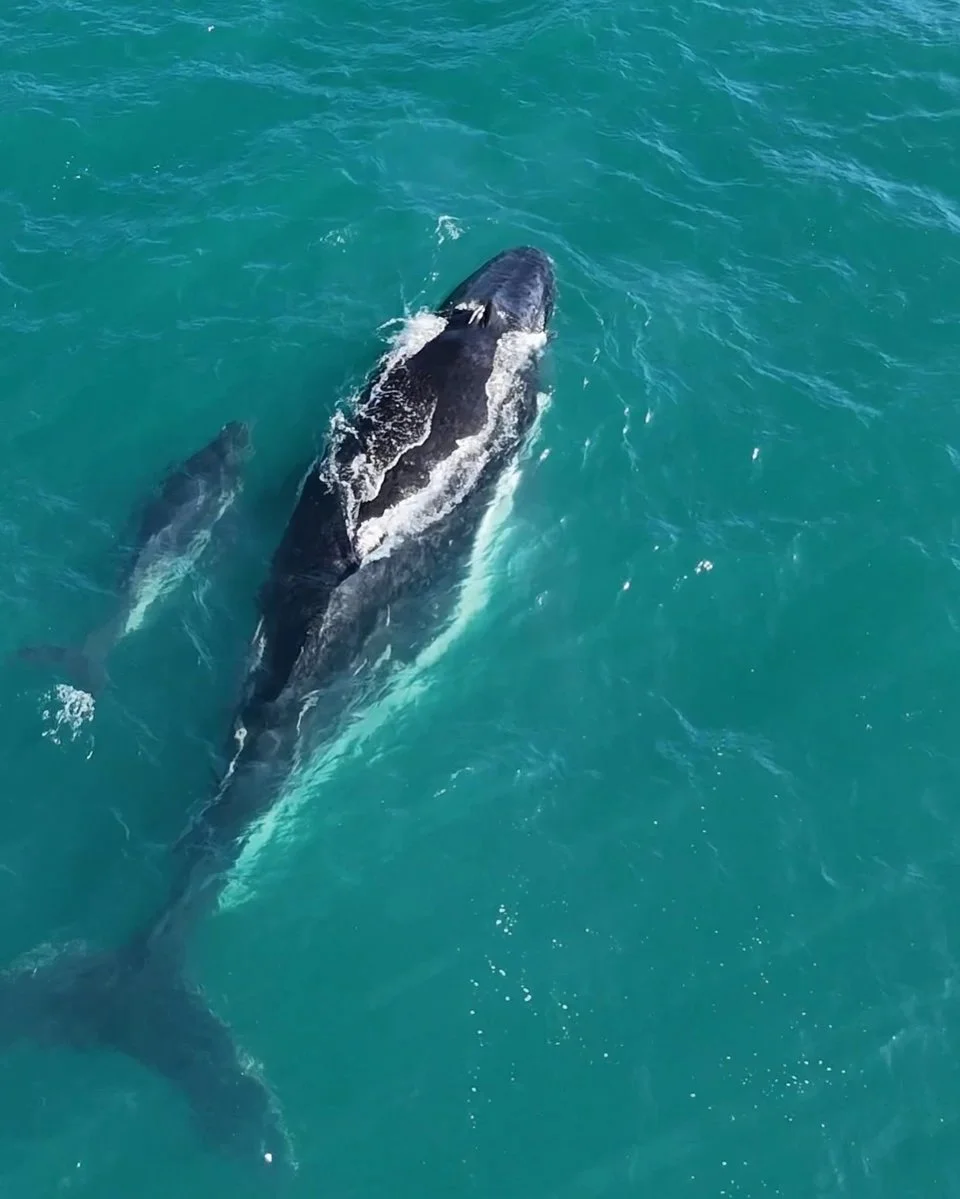Experiencing Humpback Whales at Magnetic Island
Humpback whales were once hunted to the brink — but thanks to protection and recovery, they now glide past Magnetic Island each winter, singing songs that echo through the Coral Sea.
Mother and Baby Humpback Whale spotted off Alma Bay on a Circumnavigate Tour (Aug 2024) @kelseymlaguna
A Whaling Nation’s Turning Point
Not long ago, Australia was part of the commercial whaling industry. Between the late 18th century and the 1960s, tens of thousands of whales were harpooned along our coastline — including humpbacks, whose gentle nature and coastal migration made them tragically easy targets.
As the Department of Climate Change, Energy, the Environment and Water notes, Australian whaling operations killed over 26,000 humpbacks in the east coast population alone, collapsing their numbers to the brink of extinction. By 1963, the species was protected in Australian waters. In 1979, Australia ceased all commercial whaling and later became a strong advocate for whale conservation globally.
Thanks to these efforts, the east coast population of humpbacks has rebounded to over 40,000 individuals — and their return each winter is a sign of ecological resilience and hope.
Magnetic Island: A Coastal Chorus Line
From June to September, humpbacks make their 10,000 km round-trip migration from Antarctica to the warm breeding grounds of the Great Barrier Reef. Magnetic Island, with its shallow bays and calm waters, is a natural sanctuary — particularly around Palm Passage, a channel that brings whales surprisingly close to shore.
This stretch of coast offers quiet, uncrowded whale viewing, especially in August, the peak month for sightings.
Cruises to Consider During Whale Season
While Pilgrim Sailing’s cruises are not classified as whale watching tours, they consistently deliver some of the most genuine, respectful encounters — by being in the right place, at the right time, with the right mindset.
Here are three guest favourites for spontaneous sightings:
Circumnavigate Magnetic Island (aboard Sandy)
A private fast-boat tour, with stops at the SS Adelaide shipwreck and hidden snorkelling bays. Sandy’s speed and range give you the best chance to spot whales — and with just you and your guests on board, the itinerary is entirely up to you.Sip & Sail Sunset Cruise
Golden-hour light, a glass of organic wine, and calm water set the stage for magical whale appearances in Cleveland Bay around the Island.Lunchtime Sailing Cruise
A midday escape featuring gourmet grazing platters and swimming in turquoise bays — sometimes joined by a whale surfacing nearby.
“An unexpected highlight was when a small whale came into the bay whilst we were eating our lunch. This really was incredible to see”
Are These Whale Watching Cruises?
No — and that’s exactly why they work.
Pilgrim’s tours are small, slow, and deliberately quiet. Without the pressure of spotting a whale, there’s more space for it to happen. When whales do appear, it’s on their terms — often resulting in the most meaningful, low-impact moments.
As the Great Barrier Reef Marine Park Authority reminds us:
“Curious whales may approach vessels, but boats should never chase or crowd them.”
Our approach honours this. When a whale chooses to surface near us, it’s a shared moment of trust — not tourism.
What Humpbacks Sound Like
One of the most iconic things about humpback whales is their haunting, melodic song — long, complex sequences of moans, clicks and howls that can last for hours.
According to the Australian Government’s guide on whale communication, only male humpbacks sing, and each population shares a slightly different ‘song’, which evolves over time. These vocalisations travel long distances underwater — sometimes up to hundreds of kilometres.
If you're lucky (and quiet), you might hear this song echoing through the hull of a sailboat, a deep vibration felt as much as heard. It's one of the most profound encounters the ocean can offer.
Spotting a Humpback: A Quick ID Guide
According to the Government’s whale identification guideline, here's what to look for when spotting a humpback:
Size: Up to 16 metres long
Dorsal Fin: Small and often hooked, set far back
Flukes: Distinctive black and white underside, often visible during dives
Blow: Tall, bushy spout
Behaviour: Known for breaching, tail slapping and spy hopping
From a low-profile boat like Sandy, these identifiers become thrillingly close and visible — though always from a respectful distance.
Legal Protections: What You Should Know
Australian law requires vessels and swimmers to keep a minimum distance of 100 metres from a whale, and 300 metres for aircraft or jet skis. If a whale approaches your boat, you must cut your engine to neutral and wait.
These laws are not just guidelines — they’re vital protections. Pilgrim strictly follows all whale approach regulations and maintains a low-interference approach that often leads to the most genuine encounters.
Whale Encounters: Tours with the Best Chances
Australia’s humpback whale population has recovered to over 40,000 thanks to decades of protection.
Magnetic Island is a calm, shallow haven along their migration route, especially ideal for mothers and calves.
August is peak whale season in the region.
Pilgrim’s Sunset, Lunchtime, and Circumnavigate cruises — while not whale watching tours — offer spontaneous and often unforgettable encounters.
Respectful, small-scale sailing gives guests the best chance to experience whales without disturbing them.




